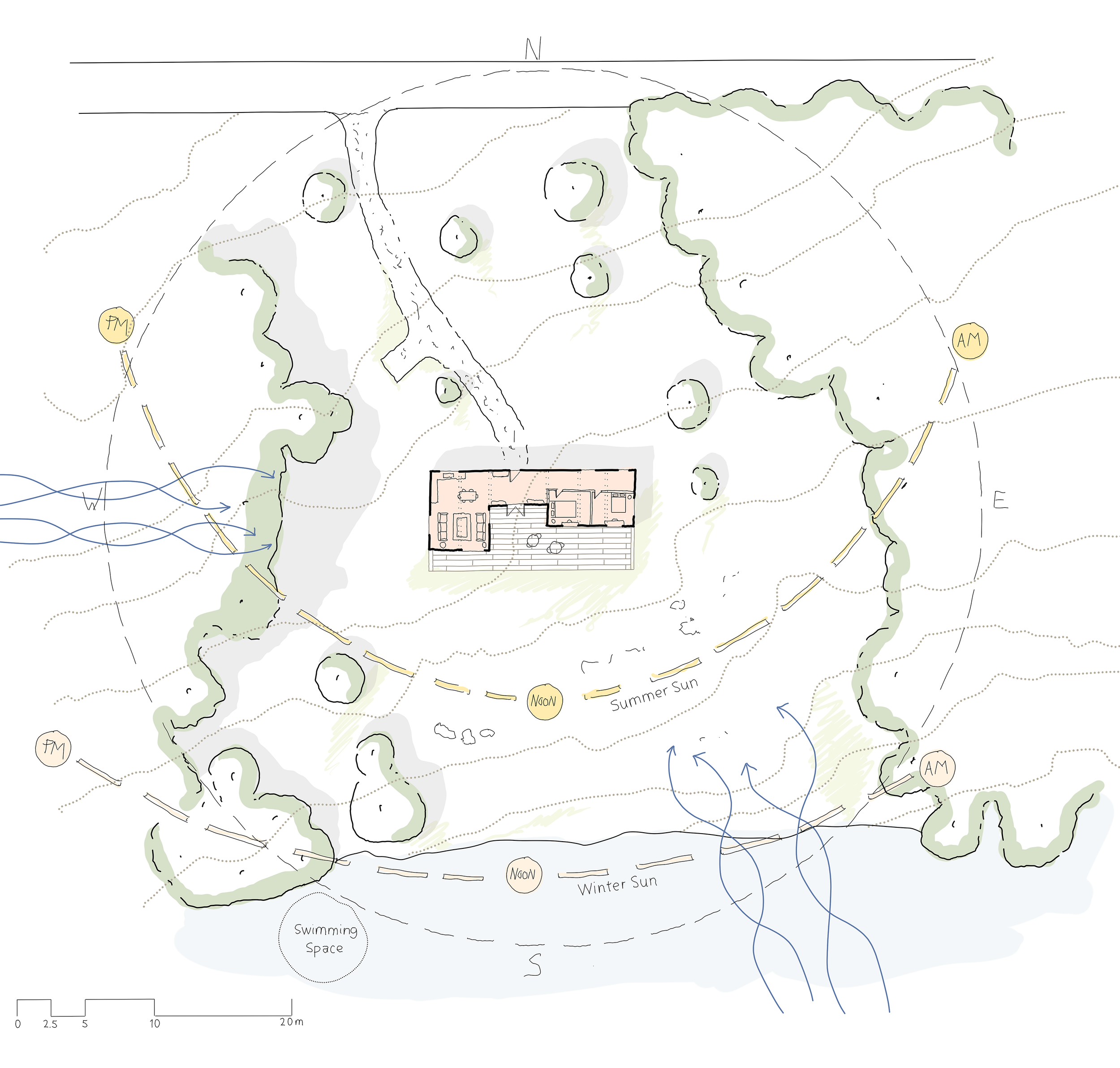Choosing the Perfect Site for Your Eco-Home
We help Maximize Your Rental Income with Eco-homes and Luxury Holiday Homes, provided by RIBA Chartered Architects.
If you're considering building your own ECO home or embarking on a self-build project, securing the right site is the first and most crucial step. The importance of selecting a suitable plot cannot be overstated, as it significantly influences the feasibility, cost, and ultimate success of your project.
All too often, we receive inquiries from prospective clients who have already purchased land without verifying its suitability for development. Many plots on the market are not inherently developable, and obtaining planning permission can be a significant challenge.
Key Considerations When Searching for Land
Planning Permission Feasibility
Before committing to a site, investigate its planning history and potential restrictions. Some plots may have previous applications denied, or they may be subject to strict zoning regulations. Local authorities often have planning maps and policies available online, which can provide initial insights.
Zoning and Land Use Restrictions
Certain types of land, such as woodlands, agricultural zones, or greenbelt areas, typically have stringent planning constraints. While exceptions exist, these sites are often challenging to develop for residential or commercial use. Woodland plots, for example, may be attractively priced, but their affordability usually reflects the difficulty of obtaining planning permission.
Access and Infrastructure
Consider whether the site has road access, utilities (water, electricity, sewage), and connectivity. A plot without these essentials will require significant investment to bring up to standard, impacting both cost and timeline.
Orientation
Ideally, the south side of your site should not be overshadowed by trees or neighbouring buildings. This is where you can receive the most solar gain, significantly reducing your need for heating. A south-facing aspect also provides bright natural light, enhancing the quality of indoor spaces.
Climate and Weather Patterns
Depending on the site's location across the UK, rainfall levels can vary drastically. For example, parts of the northwest experience far higher rainfall, whereas areas like Cambridge are drier and hotter. Understanding local weather conditions helps in planning drainage solutions and insulation requirements.
Access to Utilities
While a site may seem idyllic in terms of location and planning feasibility, utility connections can be a major cost factor. If the site is far from the grid, connecting to power, water, or sewage systems may cost hundreds of thousands of pounds—often the reason a plot is priced lower than expected.
Local Planning Regulations
Various regulations can impact your ability to build, including greenbelt restrictions, areas of outstanding natural beauty (AONB), and prohibitive covenants. If a site is selling at a lower-than-expected price, this could indicate underlying legal or planning constraints.
Natural Features
Consider how existing trees, vegetation, and natural formations can be integrated into your design. Retaining trees can provide shade, act as windbreaks, and support local biodiversity. Minimising disruption to the natural habitat ensures a more sustainable and harmonious architectural solution.
Flood Risk
Avoid areas prone to flooding. Check flood risk maps and historical data to determine whether the site has been affected by flooding in the past. Building in a flood-prone area can lead to costly mitigation measures and insurance premiums.
Soil Quality
Evaluate soil stability and drainage capacity. This typically requires expert soil analysis, as the foundation system is one of the most expensive parts of a build. If the soil cannot support the required foundation, additional engineering solutions may be necessary, significantly increasing costs.
Noise Levels
Consider the impact of nearby traffic, industrial areas, or other noise sources. A peaceful setting can enhance the comfort and enjoyment of your home, whereas excessive noise could become a long-term issue.
Views and Aesthetics
Assess the visual appeal of the site and its surroundings. A site itself may not be visually appealing, but if it offers stunning views or is surrounded by natural beauty, it can still be an excellent choice. The orientation and placement of your home can take advantage of attractive aspects while minimising exposure to less desirable ones.
Next Steps
If you are at the early stages of planning your ECO home and are searching for the perfect site, we can assist you in evaluating potential plots, understanding planning requirements, and guiding you through the entire process.
Book a free consultation today to discuss your project and ensure you start your self-build journey with the right foundation. Get in touch via email or schedule a call to explore your options with expert guidance.



